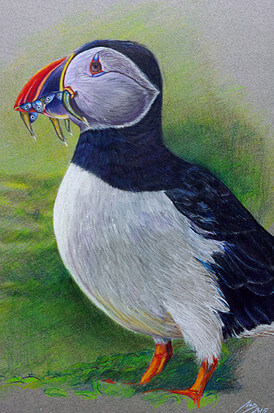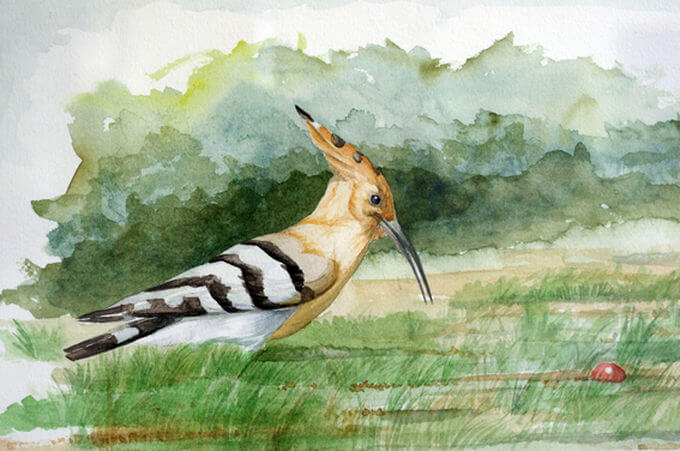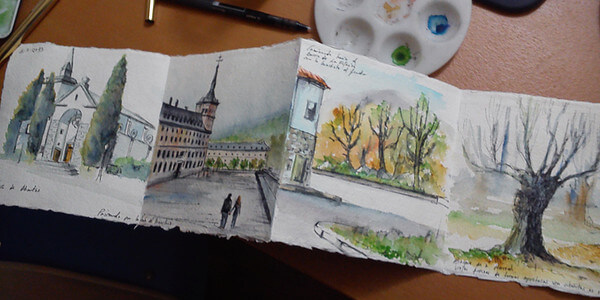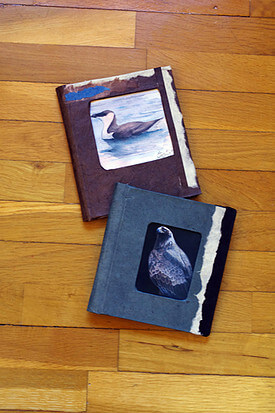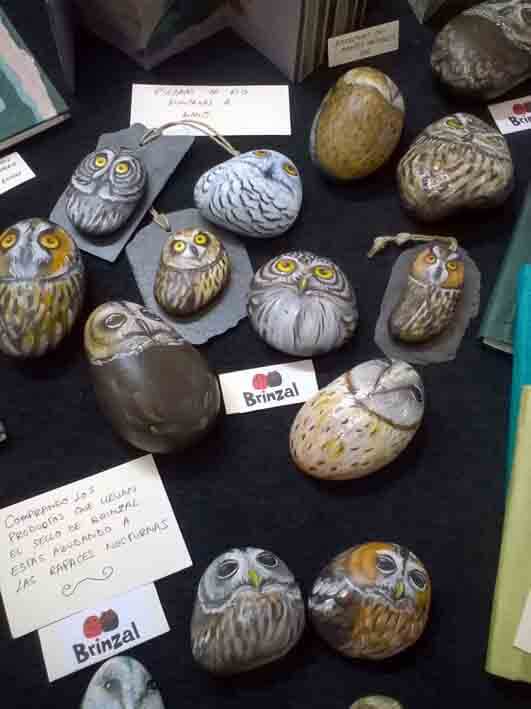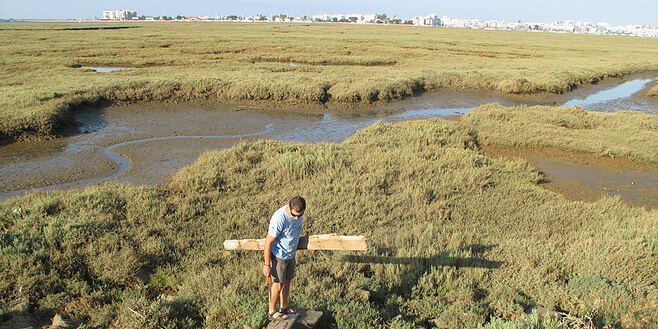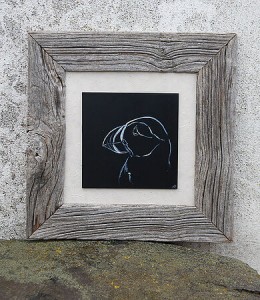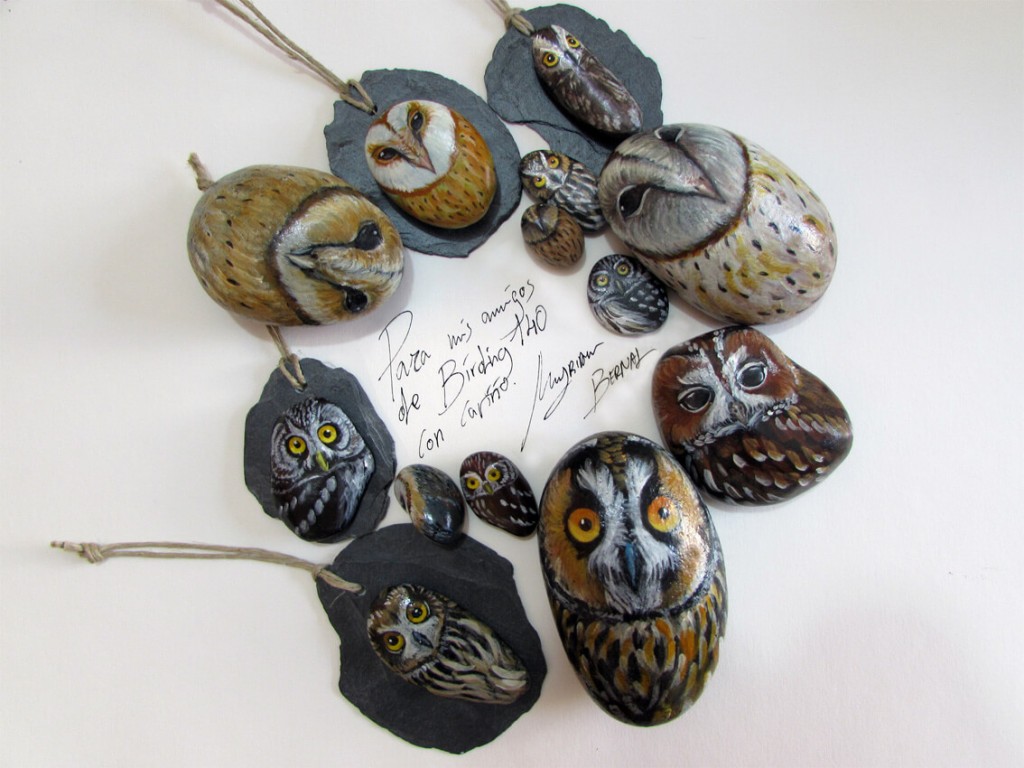Art and nature are her raison d’être. She seeks inspiration in the latter as a means of expression towards the natural environment. In all her works we can clearly see her respect towards the animals and the planet. In addition, the use of recycled materials of natural origin that ensure the conservation of the planet is a constant in her work. From her website we approach her work thanks to a modern and contemporary design. The gallery shows sea birds, chickens, birds of prey, Hoopoes… All of them created using different painting techniques.
In Myriam’s paintings stand out her pencil colours in the puffins and murres, the detail of a Tawny Owl painted with graphite on recycled paper, the way watercolour brings life to a Hoopoe, and the sea birds. She also shows great skills when representing birds of prey in pastel. Let’s not forget the realism of her sparrows and stonechats in acrylic painting. We see her way of exploring at the time of creating, and she dares to make meticulous travel notebooks, modern bindings, recycled frames for her works and hand-painted river stones. All of these from a base that exudes ecology and knowledge of the natural environment.
From Birding140 we want to introduce you to her work, her secrets, and reach out to the naturalist who has managed to bring art and nature together. To that end, we have conducted an exclusive interview with this Madrilenian based in El Escorial.
- Question: The first question is a must, even though we know that you profoundly admire animals. How did you come up with the idea of reflecting your experiences during your field trips?
- Answer: Since childhood I have been fascinated by Nature and all the living creatures that conform it. This, together with my passion for Art, made me feel the need to reflect in my works the sensations I experience, seeking to transmit the admiration and respect we all should feel for all life forms that surround us.
- Question: Just from the way you represent birds we can figure out that you always look for a natural look. But when producing a piece of work, do you rather bring your brushes with you or gather sketches and finish the work in the privacy of your studio?
- Answer:Without a doubt, the observation of a species in its natural environment is a magical moment for an artist. And this is how I like to start my works. I specially work with painting materials like pastel, acrylic or colour pencils, which are not so versatile in the field. For this reason, I take references and little sketches with watercolour and ink and I later finish my works in the studio, using some photographs I may have taken, and from what I have seen through the telescope. Learning to paint from nature is an art in itself and it requires constant learning, which can take years. For this reason, when I have the chance I try to learn from the great masters we have in Spain in this field, like Juan Varela, Jose Antonio Sencianes, Antonio Ojea or Francisco J. Hernández.
- Question: Going over your work we observe that you have experimented with multiple painting techniques. But which one makes you feel more comfortable?
- Answer:I feel very comfortable with pastel, a medium that allows for a very special communion with the surface and the materials, given that, excluding pencil-made details, I usually work on the paintings with soft pastel and blurring, which I can do with my fingers. On the other hand, watercolour is a medium wherein I am entering little by little, especially for my travel notebooks.
- Question: Your travel notebooks are a real surprise. On them, you reflect the intensity of the moment lived, always from a natural perspective. But how did the idea of the travel notebooks arise?
- Answer:Some time ago I started to combine my interest in Nature with my interest in landscapes, cities and other cultures. I felt the need to paint wherever I was, so I started a small notebook about Somiedo, going through Iceland or the Azores, to end up creating one about Cuban culture, which won the first prize in a Travel Notebook contest in 2015.
- Question: We have noticed that meticulousness and care are recurrent in your hand-made binding work with recycled materials. In them, you use LOTKA paper from Nepal. Could you explain to our readers the added value it involves?
- Answer:I am delighted to hear this question. The traditional and ecological production of these papers is the way of life and sustenance for many families in Nepal. The women are in charge of the plantations (in the very foothills of the Himalaya) and of the harvesting, processing and natural dyeing of each paper. When we buy a product made from Lotka paper, we are helping these families to make a living, and we particularly help a disadvantaged group, as are women. Their work is admirableꟷ not even the earthquake in April 2015 has stopped them from keep producing the paper demanded by the first world, despite many plantations having been buried in mud.
- Question: We are impressed by the collection of painted stones on which you represent nocturnal birds of prey. How did you come up with this idea that joins elements of nature with art?
- Answer:The idea emerged from the search of ecological bases with no water footprint and no pollutants in its composition. If you have a stone, you have an element that has been created by Nature. Something we cannot recreate.
- Question: Which are the steps of the process in order to turn a stone in a small canvas?
- Answer:When I see a stone, I am already instinctively imagining that small canvas. In the case of nocturnal birds of prey, the form of the stone itself suggests one or other species. After that, the process is simple. I clean the stone with a cloth in order to remove the dust. One coat of non-toxic primer as a base for acrylic painting and, once the stone is painted, several coats of water-based varnish to protect it.
- Question: What is the connection between this part of your work and Brinzal?
- Answer:All the work I carry out always has a solidarity component. And, depending on the topic, I help a different NGO. When I started to pain my first stones with nocturnal birds of prey, I though with my work I could contribute my tiny share to the conservation of these birds. This is how I contacted Brinzal, an organisation from Madrid that carries out a praiseworthy work of study, conservation and recovery of these birds of prey.
- Question: We are now reaching the end of the interview. We observe that in your creative process you have developed a way of combining ship recycling with the creation of unique frames. Where do you get such and original idea and how do you develop it?
-
- Answer:It all starts when I attend a Nature painting course in the Natural Area of the Odiel Marshes. There, I meet Jose Manuel Mendez, technician in the Environment Agency in Huelva. He has great skills in working wood. Inspired by the work carried out with recycled wood in Norway, Jose started to create frames with the wood from ships abandoned in the marsh. After the hard beginnings ꟷdue to the difficulty entailed in working woods that have been under such adverse environmental conditionsꟷ nowadays he manages to produce real masterpieces, creating a unique and unrepeatable frame for each painting. Moreover, he helps to the cleaning and conservation of the coastline, which is another added value. His work seemed like the perfect complement for my painting, and there are luckily more artists who are starting to frame their works with such special pieces.
- Question: To wind up this interview, we are going to ask you to exclusively dedicate a work to the readers of Birding140.
With this interview we have entered the studio of a passionate and compromised woman in order to introduce you to the artist. She is also embarked in projects of conservation, study and rescue of our fauna. She does not hesitate to bring life to little moments of the natural environment in each one of her works. From these lines, we suggest you get lost in her work for a moment. Thank you for everything, Myriam.

